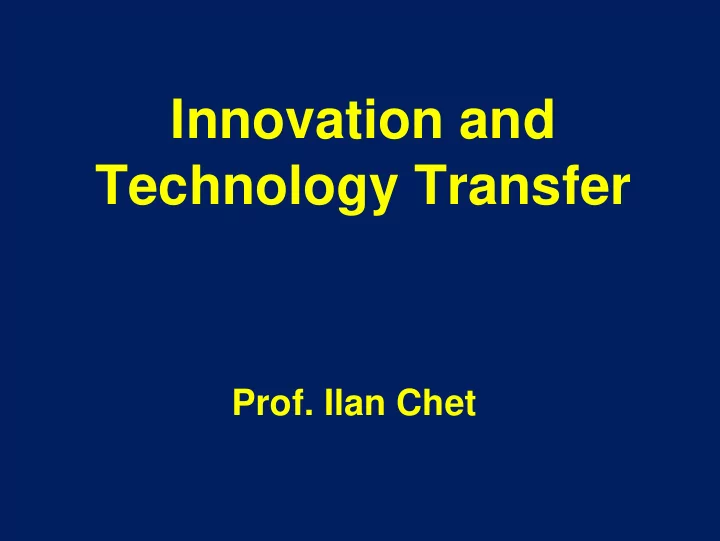

Innovation and Technology Transfer Prof. Ilan Chet
ac*a*dem*ic (ak’e-dem’ik) adj.
Interdisciplinary Science
Academia-Industry Relationship Patents
Universities Governmental Support Research Companies Institutes Death Valley Bridging the Gap
Innovation • We cannot teach innovation • We need to nurture the right atmosphere for innovation • We need to give incentives to researchers
Examples of innovations in Agriculture
The Tal-Ya Tray: A simple, scalable solution to some of the world’s biggest problems
Effects 2 lemon trees planted simultaneously, after 3 years of identical care. Tree on left uses Tal-Ya Tray, tree on right does not (with drip irrigation)
Technology Transfer • Universities in Israel own transfer technology companies who deal with their inventions. • In order to successfully bring these findings to the marketplace, the company protects the University inventions and licenses them out through its professional team
Typical departments in Technology transfer companies - Intellectual Property Department - Legal Department - Business Development Department - Finance Department
Activity at Harvard University
Patent revenues in Universities
The Patents 1.The researcher is always the inventor registered on the Patent. 2.The University always owns the Patent 3.The University doesn’t sell the Patent but gives an exclusive license to a company, investor, venture capitalist, etc
IP income divided between the University and the researcher Royalties: 60% to the 40% to the University researcher Stocks: 60% to the 40% to the University researcher
Anticipated Time for Research Application Research Amount of Current Time for Application (years)
Marketing: Facts vs. Fiction 1. Non-aggressive marketing 2. Distance difficulties 3. Difficulty in making good contracts 4. Exploitation by companies (in signing and execution of contracts) 5. Weakness in litigation
Compensation/Rewards to the Scientist 1.“Consultation Bonus” added to salary 2.Registration as patent inventor 3.Occasionally – scientific recognition 4.Royalties from product or development 5.Stocks in company 6.Future expectations 7.SATISFACTION and PLEASURE
The Five Stages of a Project 1. Excitement and Euphoria 2. Disenchantment 3. Search for the Guilty 4. Punishment of the Innocent 5. Distinction for the Uninvolved
Recommend
More recommend